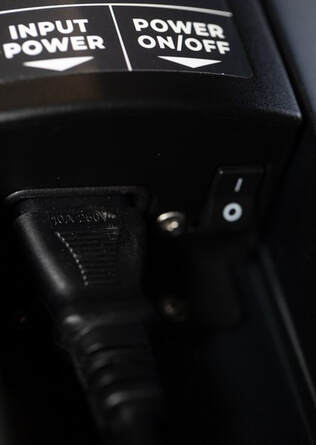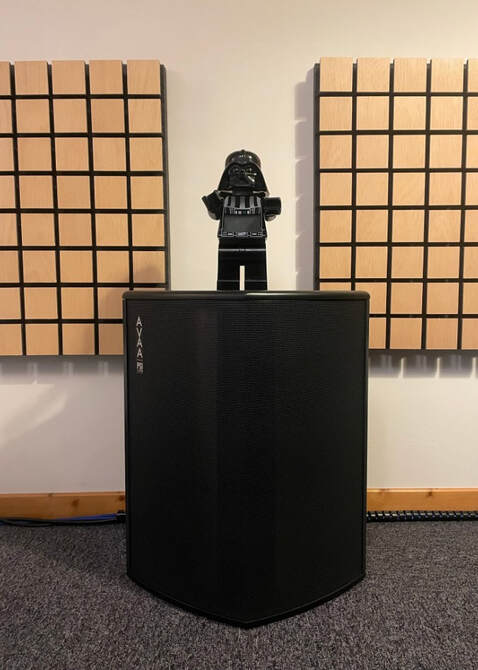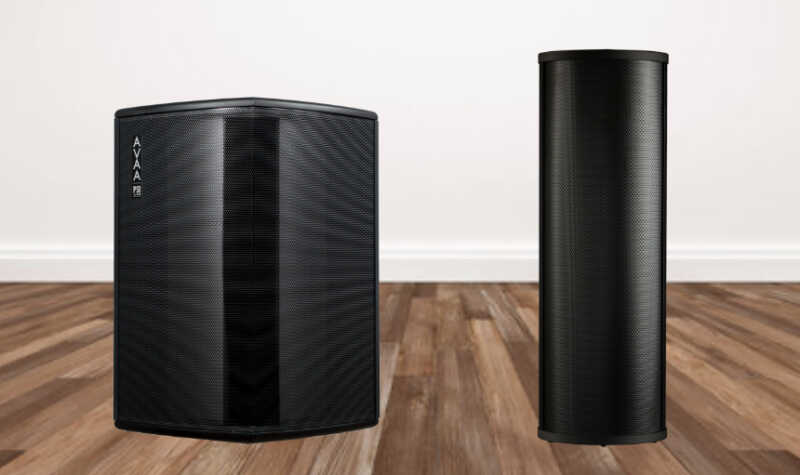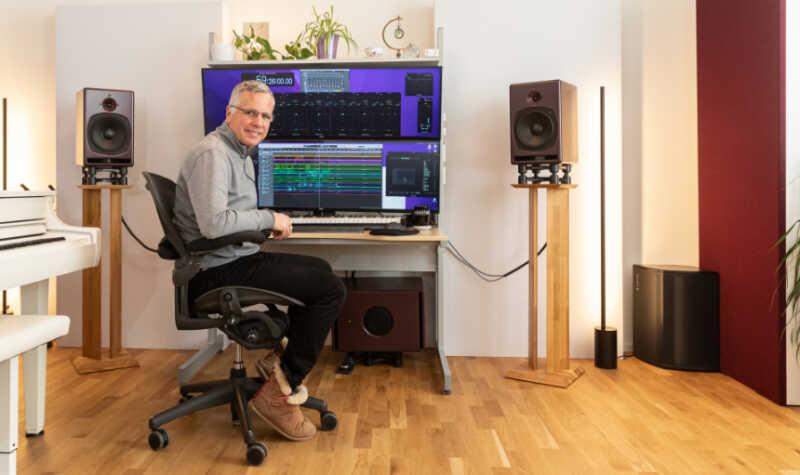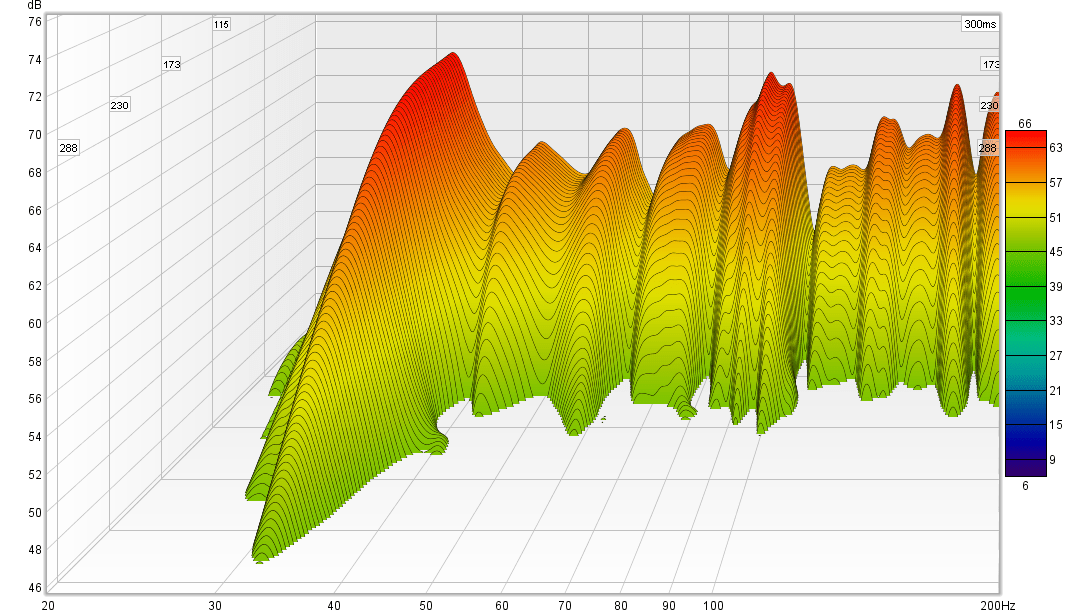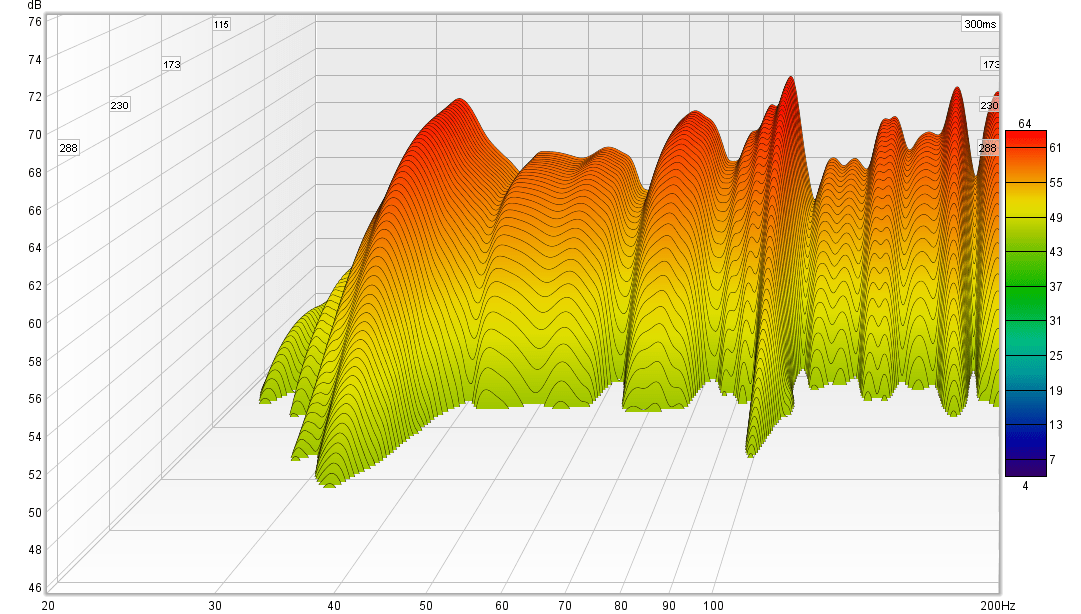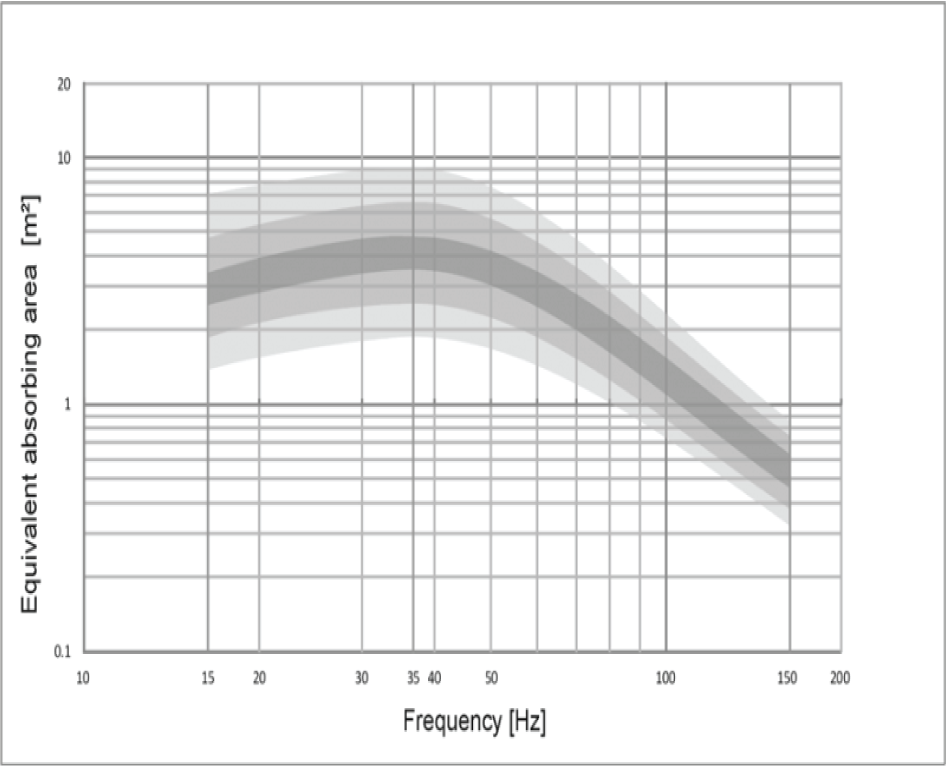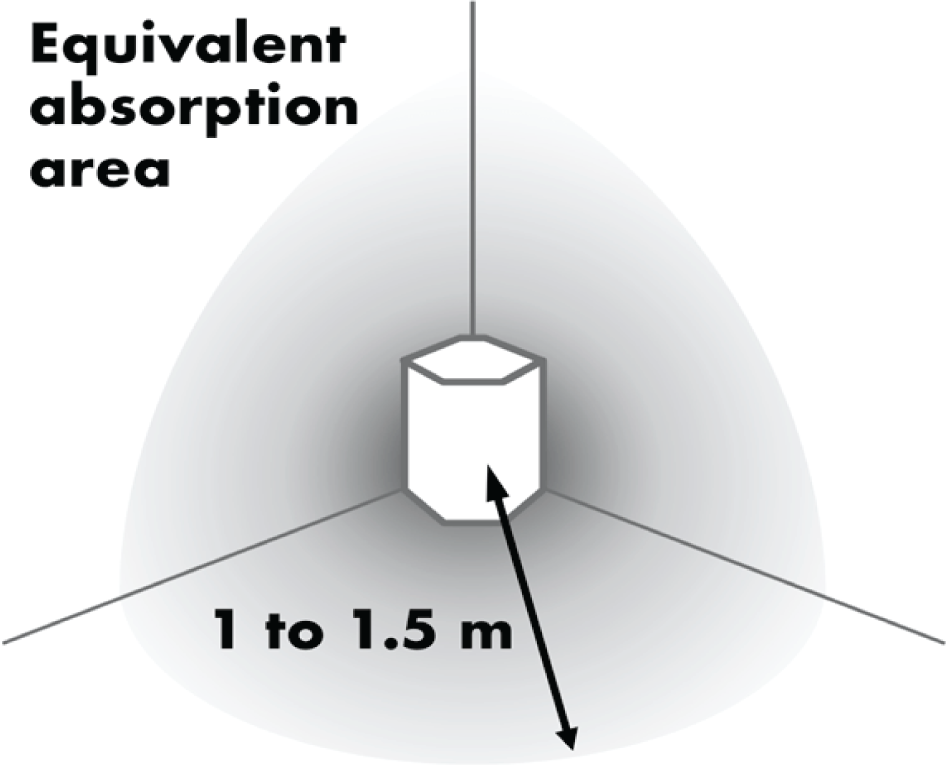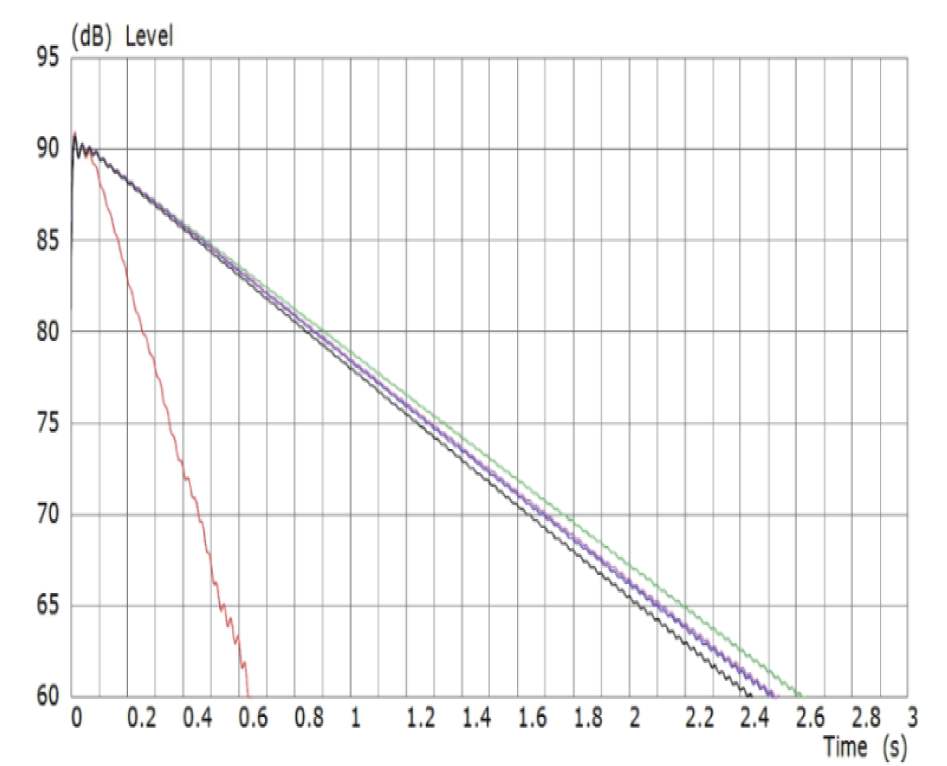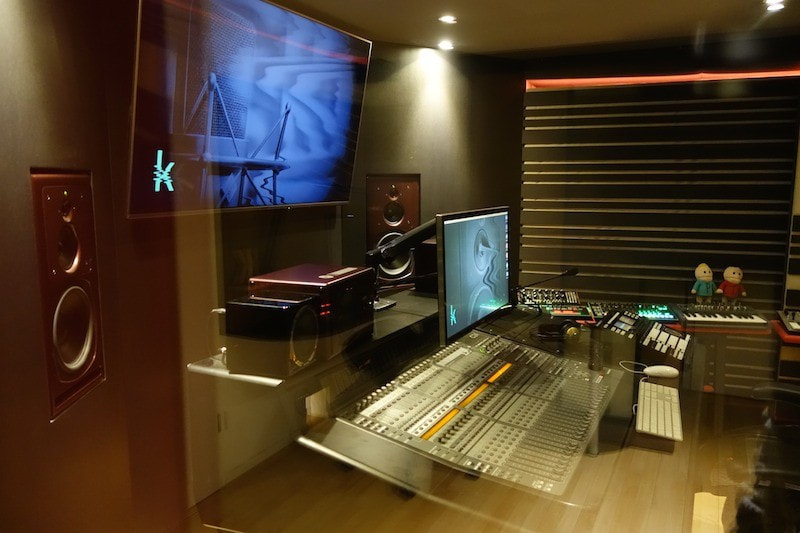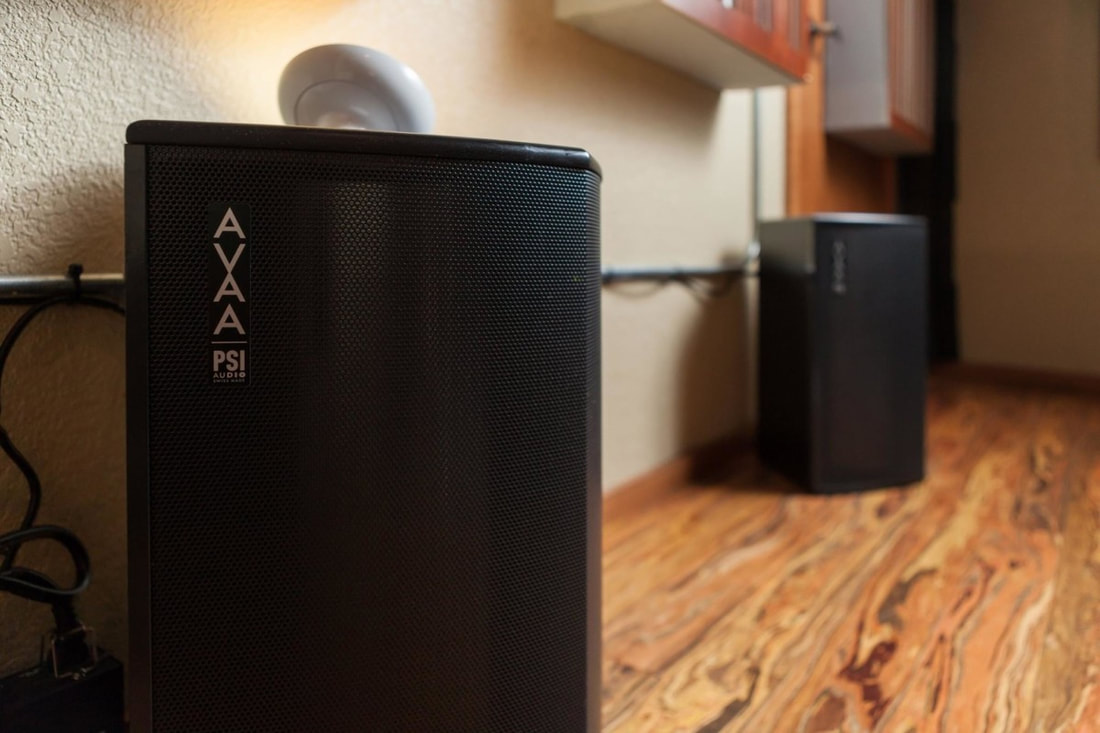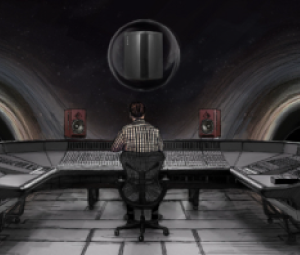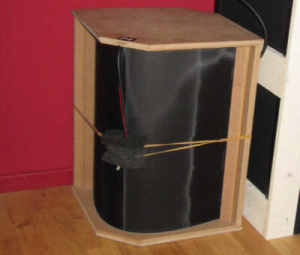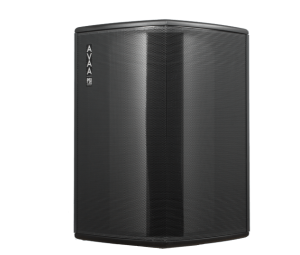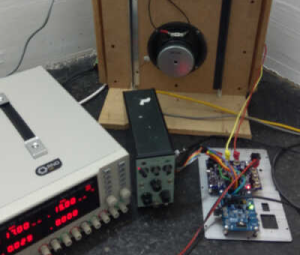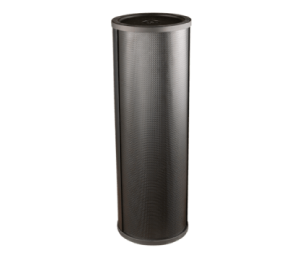What Do the AVAAs Do?The AVAAs actively absorb standing modes in a room, specifically those between 15 and 160 Hz. Unlike passive absorbers, the AVAAs achieve this with greater efficiency and in a much smaller form factor. With each AVAA in operation, the effect is equivalent to a much larger hole in the wall – typically ranging between 25 and 45 times larger than the AVAA’s actual size, depending on the frequency and environment.
By lowering the acoustic impedance of the air in front of it, the AVAA effectively sucks in low frequencies over an area of about 1 to 1.5 meters. As a result, the optimal position for an AVAA is in the most rigid corners of the room, where pressure is highest and where room modes are most present. It’s important to note that while the AVAA improves room acoustics, it has little impact on the inevitable first reflections of sound. Therefore, proper positioning of loudspeakers and listening equipment is crucial for achieving the best possible sound quality. |
Why Should I Use AVAA Technology?
|
THE PAIN
• Room modes are the most significant acoustic issue in virtually all enclosed spaces. • These low-frequency phenomena typically range between 15 and 160 Hz and resonate for much longer than other frequencies, leading to uneven sound pressure levels throughout the room’s volume. • In addition to their disruptive impact on sound balance, room modes also create a masking effect on higher frequencies, resulting in an unbalanced and muddled sonic environment. |
THE AVAAs
• AVAA is a one-of-a-kind patent-protected product that functions as a broadband active absordber. • AVAA’s unique design enables it to effectively absorb room modes spanning the 15 to 160 Hz frequency range, making it a powerful solution for improving sound quality. • AVAA is highly efficient, significantly reducing the resonance time of low frequencies and resulting in cleaner, more balanced sound. • Despite its powerful capabilities, AVAA is remarkably small, delivering comparable performance to passive bass traps that are 45 times larger in size. • AVAA is incredibly easy to use – with no calibration or setup required – users simply need to find the best location in their room to position the device. • AVAA is also highly mobile, making it easy to move between rooms as needed to achieve optimal sound quality. |
THE GAIN
• Using two AVAA units can significantly redce the resonance time of room modes in any environment, dramatically improving sound quality. • AVAA does not impact the sound output from speakers, but rather works to improve overall room acoustics. • With AVAA, bass will become tighter and clearer, eliminating the low frequency veil and fog that can obscure higher frequency sounds. • AVAA also improves localization of low frequencies, providing greater accuracy and clarity in the sound stage. • Improved room acoustics through the use of AVAA can enable faster, more confident mixing and mastering decisions. • With AVAA, you’ll be able to enjoy your audio content more fully, focusing on the source material rather than the imperfections of your acoustic environment. • Finally, the AVAA is a mobile, durable solution that’s built to last a lifetime, making it a smart investment for audiophiles, producers, and studios alike. |
AVAAs in Practice
|
Equivalent Absorbing Area This graph shows the equivalent absorbing area of one unit, varying with frequency. The equivalent area varies from approx. 1 m2 to approx. 8 m2, depending on the room and the position of the AVAA in the room. An equivalent absorption area of 5 m2 is 25 times the size of the AVAA C20 and 40 times the size of the AVAA C214. |
More Effective than Passive Absorption The AVAA can be more effective than a perfect absorber of its own dimension by imposing a very low impedance around it and absorbing pressure up to about 1 to 1.5 m around it. |
Comparison Comparing the AVAA C20 to passive materials of any type highlights its fantastic efficiency. Room mode at 39 Hz. • AVAA optimal position • Helmholtz resonator optimal position • Empty measurement room • Plate swinger – optimal position • Porous absorber – optimal position |
Why We Created AVAA TechnologyThe birth of the AVAA technology idea occurred in the late 90s as we tested PSI Audio monitors in recording and mixing studios. We discovered significant variations in their performance from room to room. While some studios had proper acoustic treatment, many lacked absorption, leading to issues with room modes and blurred and muddy low-end sound.
In 2012, we seized the opportunity to launch the AVAA project with the support of two Swiss universities for three years. Our goal was clear but the challenge was figuring out how to achieve it. With the help of the best engineers in electronics and electro acoustics, we succeeded in creating this amazing active bass trap. Initially, we only intended to use our product to showcase our studio monitors. However, it quickly gained a positive reputation and interest skyrocketed. |


